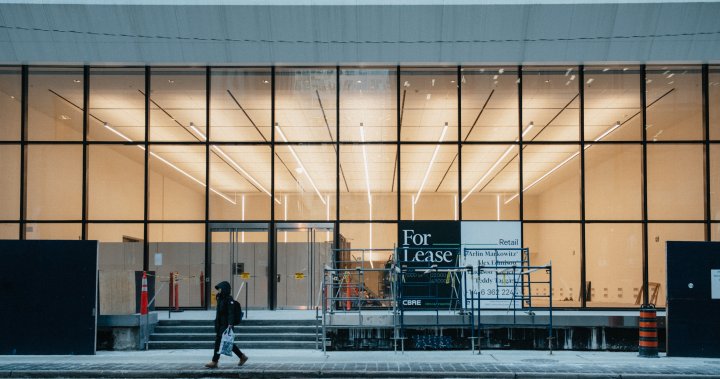THE REAL: Judging by all the recent high vacancy in the core, i doubt any more office towers will be built after the second phase of CIBC square.
Some thoughts on the longer term perspective. But first a brief comment on the present state. The past couple of years have seen a large amount of new product delivered or about to be so in downtown, and near downtown Toronto: the CIBC Square buildings, TD Terrace, the EQ Bank building and T3 Bayside to the east, Portland Commons, QRC West Phase 2, T3 Sterling Road and the office areas of 57 Spadina (The Taylor), and Liberty Market Tower. The office space in the buildings which have been completed but not yet leased counts as available, impacting the overall occupancy rates - beyond what would be caused by the fall-out from Covid-19, and the increased levels of work from home. Other factors impacting the office market would include the normal ebb and flow of the economic cycles (in particular cut-backs in some areas of the financial services sector and technology companies) which has now been combined with a period of increased interest rates which tends to suppress new business formations and start ups.
All these factors coming together at the same time have obviously combined for a major hit to the Toronto office market. To some extent, the surprise is that the impact has not been worse than it has.
However as the saying goes: Demographics is Destiny. The year over year, March 2023 to March 2024 population growth in the Toronto Census Metropolitan Area was 263,000, a growth rate of 4.6% - far exceeding, in both total numbers and percentage rate the comparable growth in either Montreal or Vancouver. And the 263,000 increase does not include the population growth in the Hamilton (which includes Burlington), or Oshawa (which includes Whitby) CMA's. While Calgary may have a larger percentage growth rate than Toronto, it is a much smaller city and the actual size of its annual increase in population is much less.
On the housing side of the equation, there in a large supply of new residential accommodation coming onto the market in downtown Toronto - many new buildings have been completed recently and are now in the lease up and occupancy stages. The population density within the inner city is growing rapidly.
The most recent office building to go into the ground would be Phase 2 of CIBC Square. Nothing more of any material size appears to be imminent. So an at least five year, possibly more, gap will occur between CIBC Square Phase 2 occupancy, and availability of new office product take place downtown.
Some predictions: Interest rates will come down, with an associated recovery in new business formations and start ups. While there will still be some office space downsizing to work its way through, after the present completions the lack of new supply will result in an at first gradual, and then more quickly, increasing occupancy levels. Commute times will continue to be a downtown Toronto office occupancy headwind, but the increasing number of people living downtown along with the ongoing GO and TTC transit improvements will progressively help to offset. Also for consideration - while there will be some ongoing office development in the suburbs, they will never become a substitute for the downtown Toronto business core - the suburban markets will be increasingly constrained by their own traffic woes and lack of transit infrastructure. The density and diversity of people skills and talent available within the City will mean that organizations wishing to tap into that people market will continue to be incented to have a presence in downtown Toronto.
What has changed is the balance, the ratio in the need for residential accommodation compared to additional office space. It is good to see that the City appears to have come to its senses and is now allowing new buildings on sites where there had previously been some commercial space to proceed without an office space replacement requirement - allowing the space to be used for additional residential units.
So - definitely a hiatus in development of new office towers, but within several years, the planning process for the next tower should be starting, with ground breaking a couple of years after the start of planning.
Exactly when, and which site will it be - well that remains to be seen.
